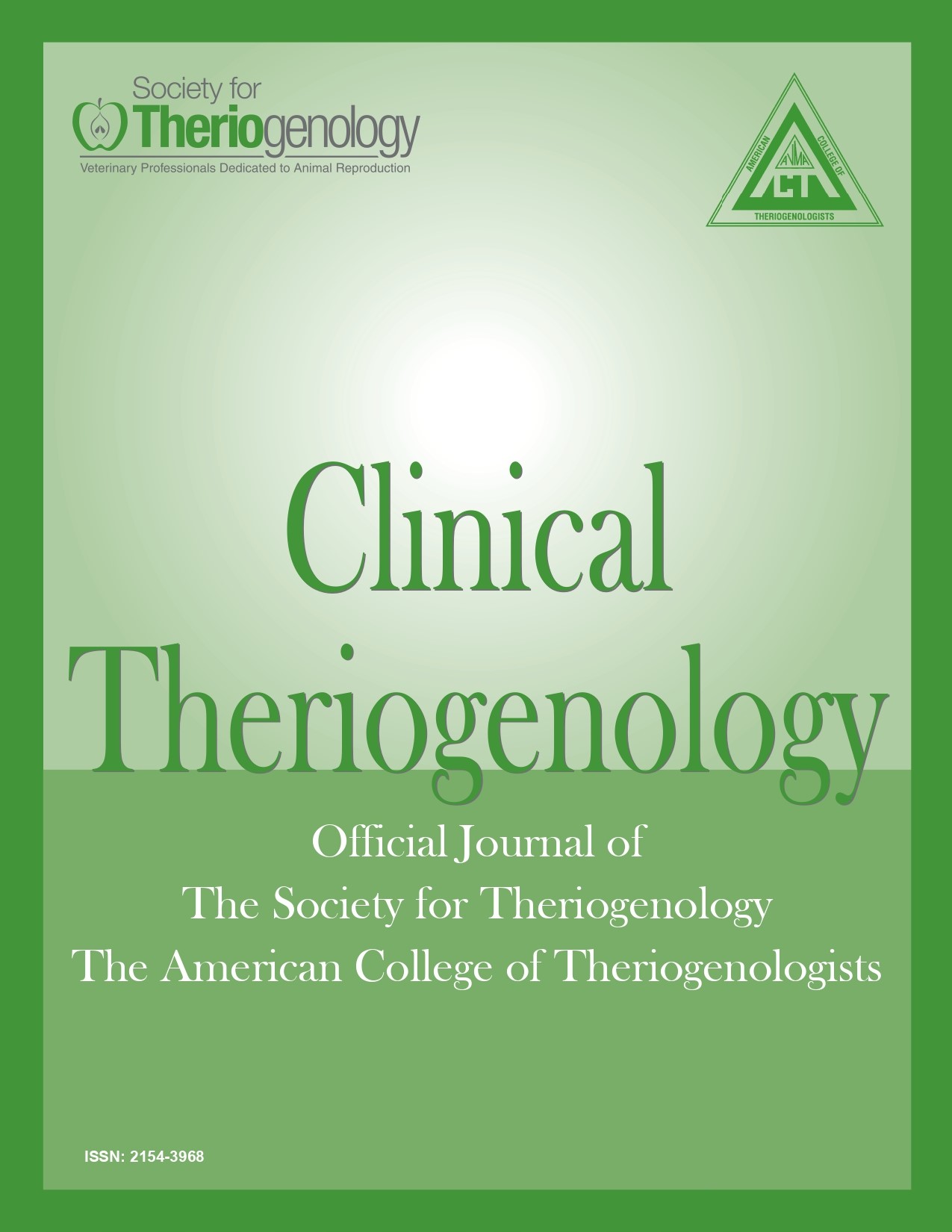Absence of pregnancies following transfer of manually collapsed equine expanded blastocysts vitrified and warmed using a modified commercial system
Abstract
The availability of suitable, estrous cycle-synchronized embryo recipient mares can be a limiting factor for practitioners performing embryo transfer. Consequently, methods for vitrification and long-term storage of equine expanded blastocysts were developed. The most successful of these methods require micromanipulator-facilitated blastocoele collapse and subsequent dehydration/rehydration of embryos during vitrification and warming. However, difficulty and expense of these techniques limit blastocyst vitrification/warming to tertiary referral centers staffed by highly trained individuals. A simplified method that would make the process accessible to field practitioners is highly desirable. In conversations with practitioners, we learned that, in the absence of a suitable recipient mare, some field veterinarians attempt manual blastocoele collapse using a small gauge hypodermic needle prior to embryo vitrification with a commercial ‘kit’. Pregnancy outcomes following warming and transfer of these embryos are not known. We duplicated this field technique in a controlled setting and determined subsequent pregnancy rates. To further mimic the scenario that might be encountered in general practice, all embryo manipulations were performed by veterinarians familiar with routine handling of fresh embryos, but with little to no experience with embryo collapse or vitrification. Twelve Grade I, large (> 290 μm) blastocysts were recovered from donor mares following routine embryo flush done 8 days after ovulation. Embryos were manually collapsed with a 25 gauge hypodermic needle and vitrified using a commercial kit. Six embryos were lost or damaged during collapse, vitrification or warming. The remaining 6 embryos were warmed and transferred to recipient mares by a veterinarian highly experienced with transcervical embryo transfer. No pregnancies resulted; therefore, we suggest that this simplified technique, at least when performed by inexperienced operators, is not suitable for clinical use.
Downloads

This work is licensed under a Creative Commons Attribution-NonCommercial 4.0 International License.
Authors retain copyright of their work, with first publication rights granted to Clinical Theriogenology. Read more about copyright and licensing here.





